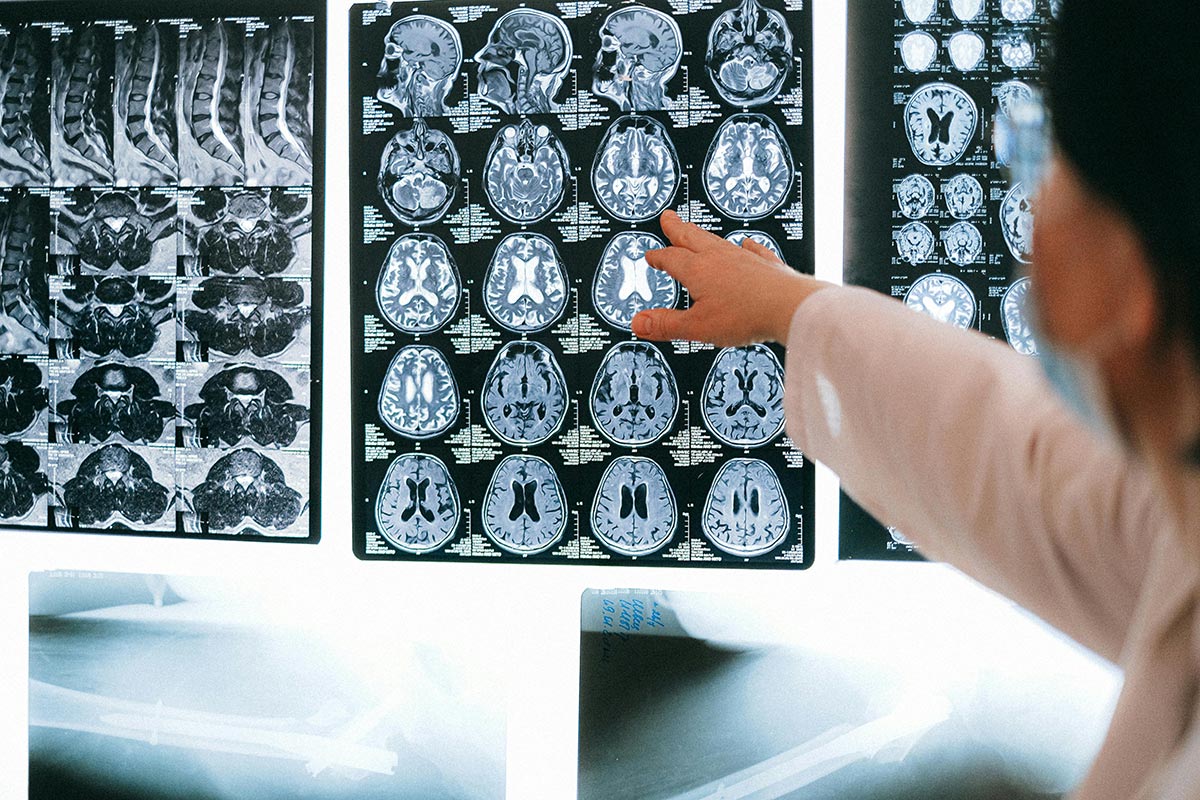
Alcohol and Medication Interactions
Understanding the Risks
Combining alcohol with medications, especially over-the-counter drugs, poses significant risks. Alcohol can interact with several medications, making them less effective, worsening side effects, causing toxicity, new symptoms, and increasing intoxication. The effects can be particularly severe when alcohol is mixed with certain antibiotics, sleeping pills, pain medications, antidepressants, and ADHD medications [1].

A survey conducted by the National Institutes of Health found that 42 percent of 26,000 adults reported consuming alcohol while also taking medications that could potentially cause adverse effects when mixed with alcohol [2]. This statistic highlights the prevalence of risky behavior surrounding alcohol and medication use, emphasizing the need for awareness and caution.
Damaging Effects on the Body
The long-term consequences of combining alcohol with medications can be dire. Over time, excessive alcohol consumption can lead to damage across multiple organ systems, including the liver, heart, endocrine system, reproductive system, brain, digestive system, and peripheral nerves. It can also increase the risk of various types of cancer. Alone, alcohol is a dangerous and addictive substance; when combined with over-the-counter drugs, prescription medications, or illicit drugs, it becomes significantly more hazardous. This combination can lead to alcohol poisoning and heighten the risk of overdose, alongside chronic health damage.
The interaction of alcohol with medications can occur through three main mechanisms:
Interaction TypeDescriptionIncreased Side EffectsAlcohol can amplify the adverse effects of medications.Decreased EffectivenessAlcohol can diminish the beneficial effects of the medication.Life-Threatening ConsequencesCertain combinations can lead to severe health risks and complications.
Healthcare professionals play a crucial role in this context. When they prescribe medications known to interact with alcohol, they have an opportunity to discuss the patient's alcohol intake, which can lead to recommendations for reducing or eliminating alcohol consumption. Such conversations are essential for patient safety and health [3]. Recognizing the risks associated with combining alcohol and over-the-counter drugs is vital for making informed decisions about one’s health and safety.
Statistics and Surveys
Understanding the prevalence and impact of combining alcohol with over-the-counter drugs requires examining various statistics and research findings. These data reveal alarming trends regarding substance interactions and public awareness.
Percentages and Findings
Surveys indicate a significant portion of the adult population engages in the risky practice of mixing alcohol with medications. A survey conducted by the National Institutes of Health found that among 26,000 adults surveyed, 42% reported consuming alcohol while also taking drugs that could lead to adverse effects when mixed with alcohol Alcohol.org.
StatisticPercentageAdults mixing alcohol with potentially harmful medications42%Adults using medications that could interact with alcohol (overall)40%Older adults taking medications that may interact with alcohol80%U.S. population using sleep medications regularly10%
The data reveals that among adults, 40% reported taking a medication in the past year that could negatively interact with alcohol. This situation is more pronounced among individuals prescribed sedative hypnotics or opioids, which pose a significant risk when combined with alcohol. The risk of adverse effects escalates as these combinations can become deadly NIAAA.
Age-Related Concerns
Age plays a critical role in the potential for harmful interactions between alcohol and medications. Research shows that approximately 80% of people aged 65 and older took medication in the last year that could interact negatively with alcohol. This increase in older adults consuming alcohol-interactive medications heightens their risk due to age-related changes in how their bodies respond to both alcohol and medications NIAAA.
Furthermore, nearly half of the U.S. population experiences conditions like diabetes, for which they take medications daily. Introducing alcohol can lead to dangerously low blood sugar levels, putting individuals at risk for severe symptoms, including drowsiness, weakness, and even seizures Health. The dangers surrounding the combination of alcohol and sleep medications is another concern, with close to 10% of the population regularly using such drugs. Coupling these with alcohol increases the likelihood of alarming side effects, including memory impairments and difficulty breathing Health.
Awareness and education on the risks of combining alcohol and over-the-counter drugs are vital components of public health efforts aimed at mitigating these dangers.
Types of Interactions
When discussing the dangers of combining alcohol and over-the-counter drugs, it's essential to understand the different types of interactions that can occur. These interactions can be classified into two main categories: pharmacokinetic interactions and pharmacodynamic interactions.
Pharmacokinetic Interactions
Pharmacokinetic interactions refer to how alcohol affects the metabolism of medications in the body. Chronic heavy drinking can increase the activity of cytochrome P450, an enzyme that metabolizes many drugs. This enhancement can lead to an increased metabolic rate for medications during sober moments, while it may result in a slowed breakdown of medications when intoxicated. Such fluctuations can present significant risks, including adverse reactions or even fatal consequences.
Interaction TypeEffect of Alcohol on MedicationIncrease in MetabolismHigher drug clearance when soberDecrease in MetabolismSlower drug clearance when intoxicated
Pharmacodynamic Interactions
Pharmacodynamic interactions differ from pharmacokinetic ones, as they involve the additive effects of alcohol and certain medications without altering the blood concentration of the medications themselves. This type of interaction is particularly concerning in relation to the central nervous system. When alcohol is combined with specific medications, it can amplify the sedative effects, leading to a greater risk of impairment or overdose. This is especially relevant for over-the-counter drugs such as antihistamines and pain relievers.
Interaction TypeEffect of Alcohol on MedicationAdditive CNS EffectsIncreased sedation and impairment
Understanding these interactions is crucial for individuals who may be considering taking OTC drugs while consuming alcohol. It is important to read medication labels carefully and consult with healthcare professionals when in doubt. For further information, explore our articles on the effects of drug abuse and how to navigate insurance coverage for substance-use treatment.
Specific Medication Categories
OTC Drugs and Alcohol
Combining alcohol and over-the-counter (OTC) drugs can pose significant health risks. Alcohol interacts with various OTC medications, diminishing their effectiveness, exacerbating side effects, and even leading to toxicity. Common OTC drugs that can be affected include antihistamines, pain relievers, and sleep aids.
The following table outlines some common OTC medications and their potential interactions with alcohol:
OTC MedicationPotential Risks When Combined with AlcoholAntihistaminesIncreased drowsiness, dizziness, and impaired coordinationPain Relievers (e.g., acetaminophen)Heightened risk of liver damageSleeping AidsEnhanced sedation and risk of respiratory depression
Many adults are unaware of the dangers; by one estimate, 40% of adults took a medication in the past year that could interact negatively with alcohol [3]. It is crucial to read labels and consult healthcare providers about combining these substances.
Prescription Medications
The risks associated with combining alcohol and prescription medications are even more pronounced. Some prescription drugs, particularly sedatives and opioids, can be deadly when mixed with alcohol. Alcohol may intensify the sedative effects, leading to severe respiratory issues and even death.
The following table highlights some common prescription medications that should not be combined with alcohol:
Prescription MedicationInteraction RisksSedative HypnoticsExtreme drowsiness, respiratory depression, risk of overdoseAntidepressantsIncreased anxiety, worsening depressive symptoms, and heightened sedationOpioidsElevated risk of fatal overdose and respiratory failure
Alcohol can considerably alter the metabolism of these medications, affecting how the body processes them and potentially leading to dangerous health outcomes [1]. Combining these substances underscores the importance of awareness and education about the risks involved. For more information on the effects of drug interactions, explore our resources on effects of drug abuse and is sugar a drug?.
Long-Term Consequences
Combining alcohol and over-the-counter drugs poses serious health risks that can have long-lasting effects. Understanding these consequences is essential for anyone who frequently uses these substances.
Chronic Health Damage
Chronic heavy drinking can lead to numerous health issues. Over time, consuming excessive amounts of alcohol can damage various internal organs, including the brain, liver, and digestive system. It also increases the risk of cancer.
The changes in metabolism caused by alcohol consumption significantly affect the body's overall functioning. Alcohol can increase cytochrome P450 activity, altering how medications are processed in the body. This results in quicker metabolism when sober and slower breakdown of medications when intoxicated, potentially leading to adverse or fatal consequences [4].
Health IssueDescriptionLiver DamageAlcohol can lead to liver diseases like cirrhosis, characterized by the scarring of liver tissue.Brain DamageLong-term alcohol use can result in cognitive impairments and changes in mental health.Increased Cancer RiskAlcohol consumption is linked to a higher risk for various types of cancer, including breast and liver cancer.Digestive ProblemsHeavy drinking can cause issues like gastritis and pancreatitis, affecting digestion and nutrient absorption.
Risk of Overdose
The risk of overdose significantly increases for individuals who mix alcohol with over-the-counter medications. People who combine these substances expose themselves to a greater chance of overdose, alcohol poisoning, and chronic health issues [2].
Certain medications may enhance the sedative effects of alcohol, leading to severe respiratory depression or loss of consciousness. Overdose symptoms can include confusion, slow or irregular breathing, and hypothermia.
Overdose SymptomsDescriptionConfusionDisorientation and lack of awareness of surroundings.Slow BreathingFewer than 8 breaths per minute can indicate a serious problem.HypothermiaLowered body temperature which can be life-threatening.
Healthcare professionals should always inquire about a patient's alcohol intake when prescribing medications that could interact negatively with alcohol. This proactive approach can help prevent dangerous combinations and educate patients on the potential risks of combining alcohol and over-the-counter drugs. This is crucial for maintaining health and safety in those who may be at risk of substance misuse.
Education and Prevention
Importance of Patient Education
Educating patients about the risks of combining alcohol and over-the-counter drugs is crucial for promoting safe medication practices. A survey conducted by the National Institutes of Health revealed that 42 percent of 26,000 adults mix alcohol with medications that could pose significant risks [2]. This alarming statistic highlights the urgent need for awareness regarding the potential dangers associated with such combinations.
Understanding the pharmacokinetic and pharmacodynamic interactions between alcohol and medications can help individuals fully grasp the risks. Alcohol can inhibit the normal metabolism of medications, leading to an increased likelihood of adverse effects. Additionally, the additive effects of alcohol with central nervous system medications can exacerbate symptoms and complicate treatment regimens.
Patient education should emphasize the importance of reading medication labels, consulting healthcare professionals before mixing substances, and recognizing symptoms of adverse reactions. Increased awareness can empower individuals to make informed decisions about their health and avoid potentially dangerous situations.
Healthcare Professionals' Role
Healthcare professionals play a pivotal role in education and prevention efforts regarding the risks of mixing alcohol with medications. They should actively engage patients during consultations, discussing the implications of consuming alcohol while on prescribed treatments. This interaction is vital, especially for patients taking medications for chronic conditions such as diabetes or anxiety.
It's important for healthcare providers to provide clear guidance on the following topics:
TopicExplanationRisks of MixingOutline specific risks associated with combining alcohol and various medications.Safe PracticesEncourage patients to avoid alcohol while taking medications that can interact unfavorably.MonitoringAdvise on signs of adverse reactions and the importance of seeking help if they occur.
Regular training and workshops for healthcare professionals can enhance their ability to communicate these risks effectively. Providers should also incorporate discussions about lifestyle choices and substance use into routine healthcare.
In summary, both patient education and proactive engagement from healthcare professionals are critical for preventing the adverse effects associated with combining alcohol and over-the-counter drugs. Valuable resources such as effects of drug abuse and strategies for handling addiction denial can further support this initiative.
References
[2]:
[3]:
[4]:
.svg)





